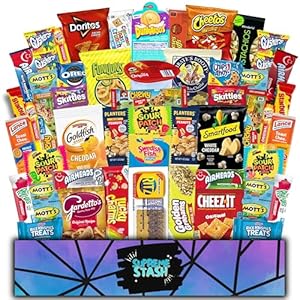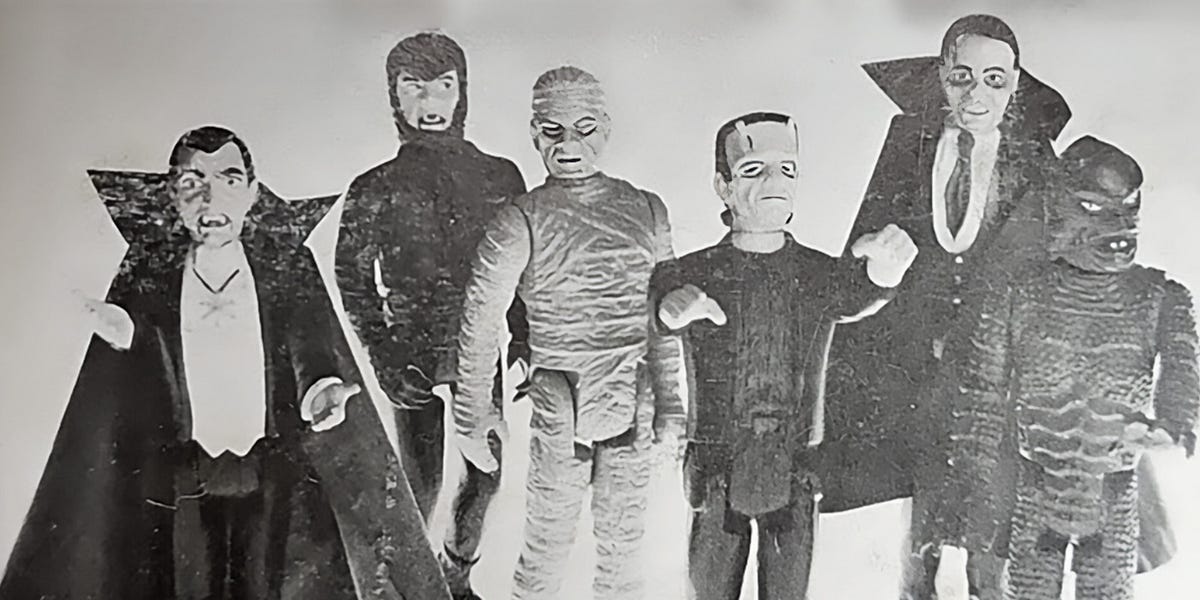
I was born into the world of 3.75-inch action figures. Sure, during my life, larger figures or dolls existed, but I quickly lost interest once Kenner released its Star Wars figures. This only intensified a few years later when Hasbro re-created the G.I. Joe Franchise at the smaller format. While other great toys would be released at different scales, the 3.75-inch figures were central to how my friends I would play. So it was very memorable and sometimes confusing when a new set of figures showed up to be played with. Could they be integrated into our ongoing GI Joe play and, if so, which team would they be on?
This is exactly the questions we were asking when a friend brought two action figures from Remco, based on the Universal Monsters, he had gotten a few years earlier. He had two of the figures in the set, Dracula and Frankenstein’s Monster (who we just called Frankenstein). I am pretty sure that during out first time playing with them, we just put them both in Cobra. They were monsters after all, so they wouldn’t be on the side of good. Eventually though we split them up. Dracula was a bad guy, but we had Frankenstein, who had been unwittingly brought to life, become a part of GI Joe. We used them until their joints got too loose to stand upright and Dracula’s cape was long gone.
Once we stopped playing GI Joe, I didn’t really think about them much until over a decade and a half later when I spotted one of the figures on eBay. I didn’t win the auction, but it did make me curious and I discovered that, while I had played with the figures, I didn’t know much about the toy line. It might not have been a big hit, but it was interesting. I want to tell you a little about these toys, but first a little bit about the company that made them, Remco.
Remco was an American toy company founded in the 1940s by Sol Robbins and Ike Heller, a pair of inventive businessmen who saw the appeal of toys that could do more than just sit still. The name came from “Remote Control,” which made sense since their early products were electrically powered submarines and cars that kids could actually steer (a very cool novelty at the time).
During the 1950s and 1960s, Remco built its reputation on clever gimmicks and licensed tie-ins, putting out toys based on “Batman,” “The Monkees,” and “Lost in Space.” They had a knack for making things that felt just a little futuristic, often powered by simple motors and powered by batteries that gave the illusion of high tech. By the 1970s the company was struggling to keep up with changing tastes and larger competitors, and in 1974 it was taken over by Azrak-Hamway International, better known as AHI, which kept the Remco name alive for toy lines like the Universal Monsters and Sgt. Rock action figures. For kids growing up in the 1980s, those later toys were often their first exposure to the brand, even if the name itself was a holdover from the postwar era.
AHI’s acquisition of Remco played a big part in how their monster toys took shape. The company already had a deal with Universal in the early 1970s, which led to one of their best-known lines, the “Official World Famous Super Monsters.” These were eight inch figures based on the classic Universal creatures, including Frankenstein’s Monster, The Mummy, Dracula, The Wolf Man, and The Creature from the Black Lagoon. They weren’t exactly in the same league as Mego’s Mad Monster figures, but that was part of the appeal.
They were cheaper, sometimes a little odd-looking, but full of personality. Plus they had a true license association. The costumes were bright, the sculpts exaggerated, and they looked like something you’d spot hanging on a rack near the register at a discount store. AHI worked the license hard, too, with everything from wind-up monsters to water pistols, all carrying that same mix of charm and chaos. It was a smart use of the Universal name, and it cemented AHI’s reputation for making the most out of what they had. Something they would push further under the Remco banner. Before the smaller format figures they did a larger format figure.
Remco’s 9 inch “Official Universal Monsters” figures came out in 1979, right as the company was trying to keep up with a market that was moving toward smaller action figures. The line included six monsters, Dracula, Frankenstein’s Monster, the Wolf Man, the Mummy, the Phantom of the Opera, and the Creature from the Black Lagoon. Each one had a cloth costume and glow-in-the-dark face and hands, which meant they looked super cool in a dark bedroom. Each monster came with an iron-on patch and in the case of Phantom of the Opera (maybe others), a glow-in-the-dark skull ring (looks like a skull and crossbones).
They also had the Monster Crush feature, a little button on the back that made their arms snap together in a grabbing motion that felt pretty impressive when you were a kid. It also makes me think these creatures were just supposed to be grabbing and wrestling one another. Well no matter how you played with them, the mix of glow plastic and fabric clothing gives them an old-school charm. Almost like the toys themselves had wandered out of an old movie horror set.
They made one accessory, a motorized lab table called the Monsterizer, complete with lights and a crank-able table that looked straight out of Frankenstein’s lab. It was part accessory and part showpiece and sadly the only playset for this scale of figures. Still, even if not a completist, it was something you’d want even if you didn’t have all the monsters. This commercial shows it in action. The kids in it are great and their accents sound a lot like the one I had growing up.
Together, the figures and the Monsterizer made up a short but memorable line that stood apart from the smaller toys flooding the market at the time. For a lot of kids, this was their first chance to actually hold a decent version of the classic Universal characters instead of just seeing them on late-night television. While they are popular, they didn’t last long, replaced or supplemented where they were still in stores, with the 3.75 inch figures.
After the 9 inch figures, Remco brought the Universal Monsters down to the 3.75 inch size that was quickly becoming the new toy standard in 1980. The same six characters returned, Dracula, Frankenstein’s Monster, the Wolf Man, the Mummy, the Phantom of the Opera, and the Creature from the Black Lagoon, now molded in plastic with painted detail instead of fabric clothing. The figures came on individual blister cards that used dark, moody artwork more in line with old movie posters than the bright packaging seen on most action figures of the time. Although, they did give it a bit more flair and color when they later introduced glow-in-the-dark to the figures.
Remco also produced a vinyl carrying case that unfolded into a simple printed play scene, more a display piece than a full playset, but a clever way to store and show off the figures.
There was also a smaller version of the Monsterizer made to fit the new figures. It kept the same basic idea, a lab table with colored lights that flickered. It gave the line a bit of the same stage-show feel as the larger toys. The first run of figures did not glow in the dark, but Remco later reissued them with glow plastic (or paint?) for the heads and hands, which gave them an eerie look under low light. The Mini Monsters may have been simple, but they carried the Universal designs into the early eighties in a way that felt faithful and still slightly old-fashioned, which is part of why they still have a following today.
The Mini Monsters line didn’t last long, probably about two years. Most evidence points to the first release appearing around late 1979 or early 1980, with the glow reissue following in 1981. By 1982, the figures were already disappearing from shelves. There’s no sign of any new sculpts or additions after that, and Remco had moved on to other licenses and small action figure lines by the mid-1980s. Here is a later ad for the glow-in-the-dark version of them being sold at Toys-R-Us. At $2.48, they were in the same ballpark as other figures of the same size.
It’s fair to say the line underperformed more than it failed outright. The toys were well made, but they came out at a time when kids were focused on Star Wars, G.I. Joe, and superheroes. The Universal Monsters were already fifty years old, and though still popular on late-night TV, they didn’t have a fresh movie or cartoon pushing them. Remco’s decision to stick with those classic designs meant the toys appealed more to older kids or collectors than to the younger audience driving sales. Without a tie-in or ongoing promotion, the line had nowhere to go after the initial wave sold through.
So while the Mini Monsters didn’t collapse in the sense of a recalled or canceled line, they just faded quietly. They sold well enough to get the glow versions, but not enough to expand. Today, that short run works in their favor, since the limited number of figures and variations make them an easy, nostalgic set for collectors to complete.
The Monsterizer, the glow plastic, the quiet packaging, all of it had a kind of charm that most toys of the time didn’t bother with. You could tell Remco was trying to give those old Universal faces a little stage of their own, even if the audience had mostly moved on to fighting Darth Vader or the evil forces of Cobra. These toys weren’t chasing a blockbuster or trying to tie in with a new movie, they were just banking on the idea that kids still liked old horror. And some of us did. The line didn’t last long, but maybe it didn’t need to. It did what it set out to do, giving those monsters one more good run before they slipped back into late-night TV, model kits, and super cool set of Burger King toys. Now they stand as a bridge between two eras, part toy history and part love letter to the kind of monster movies that never really go away.
Trending Products



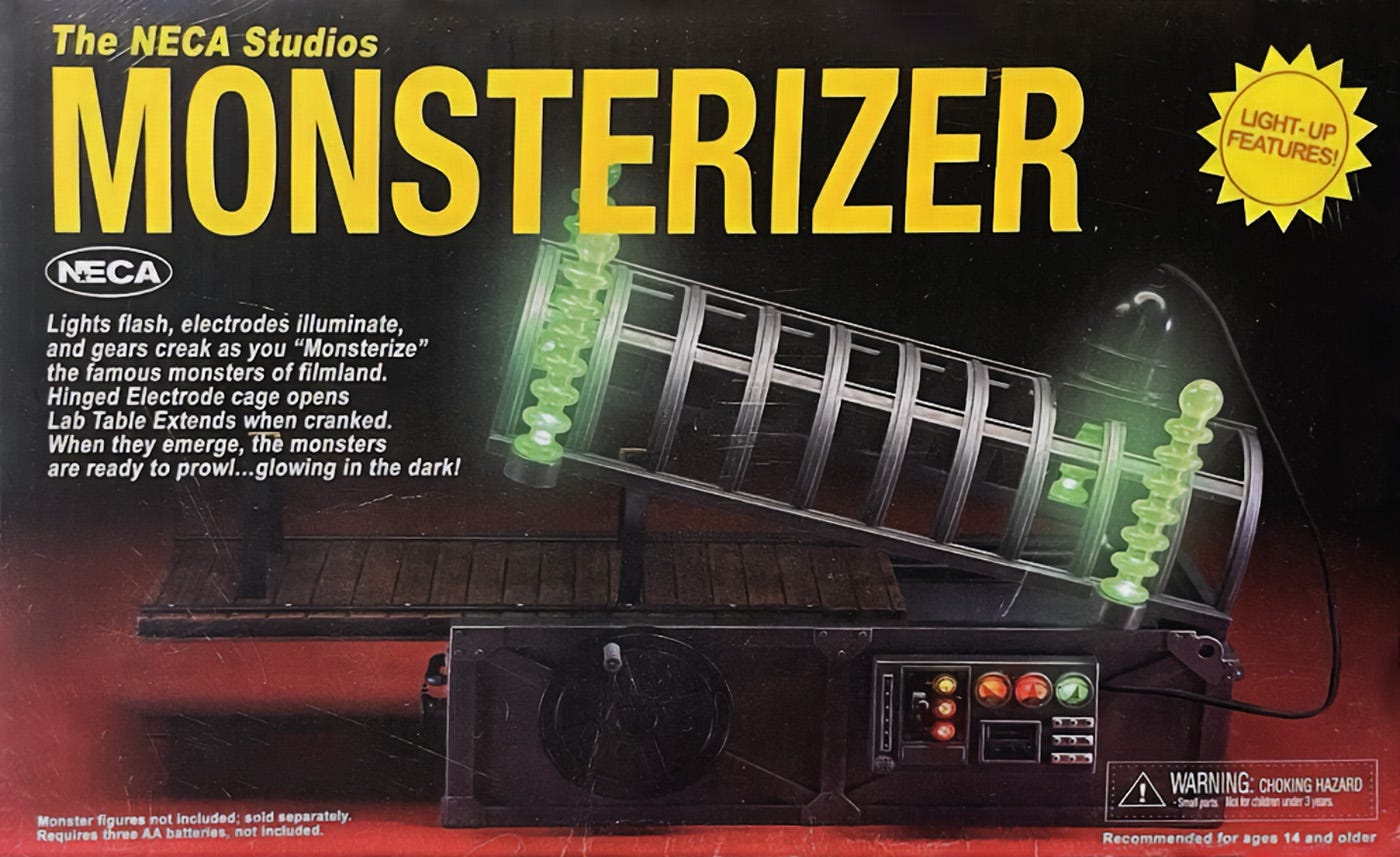
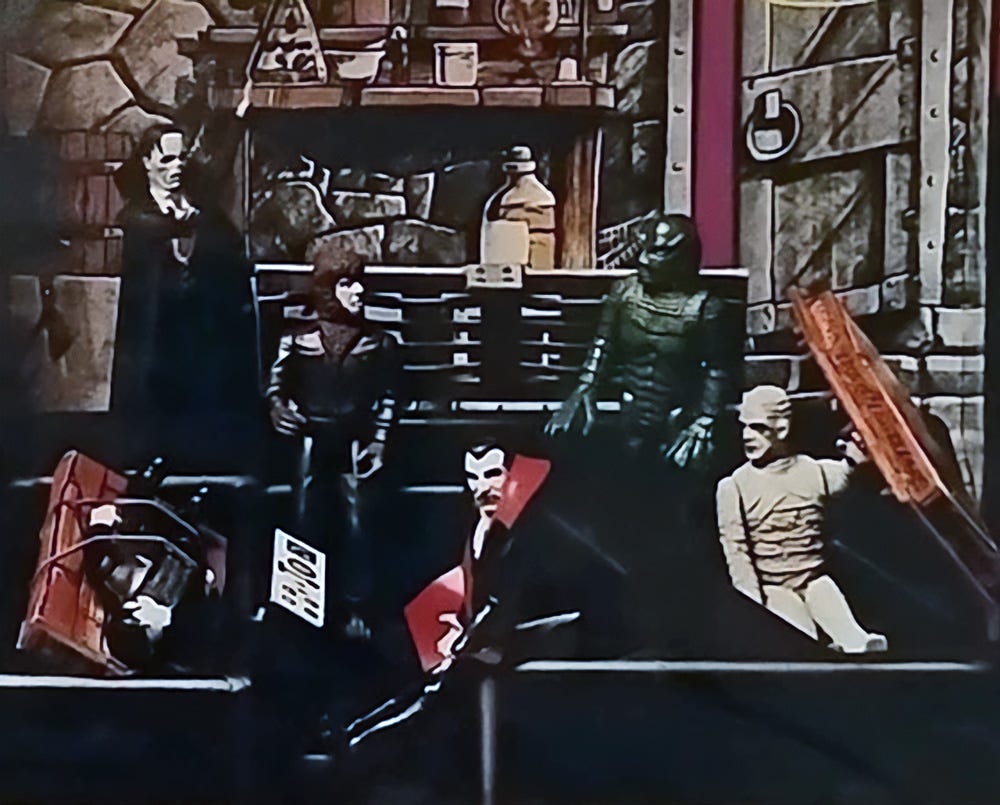
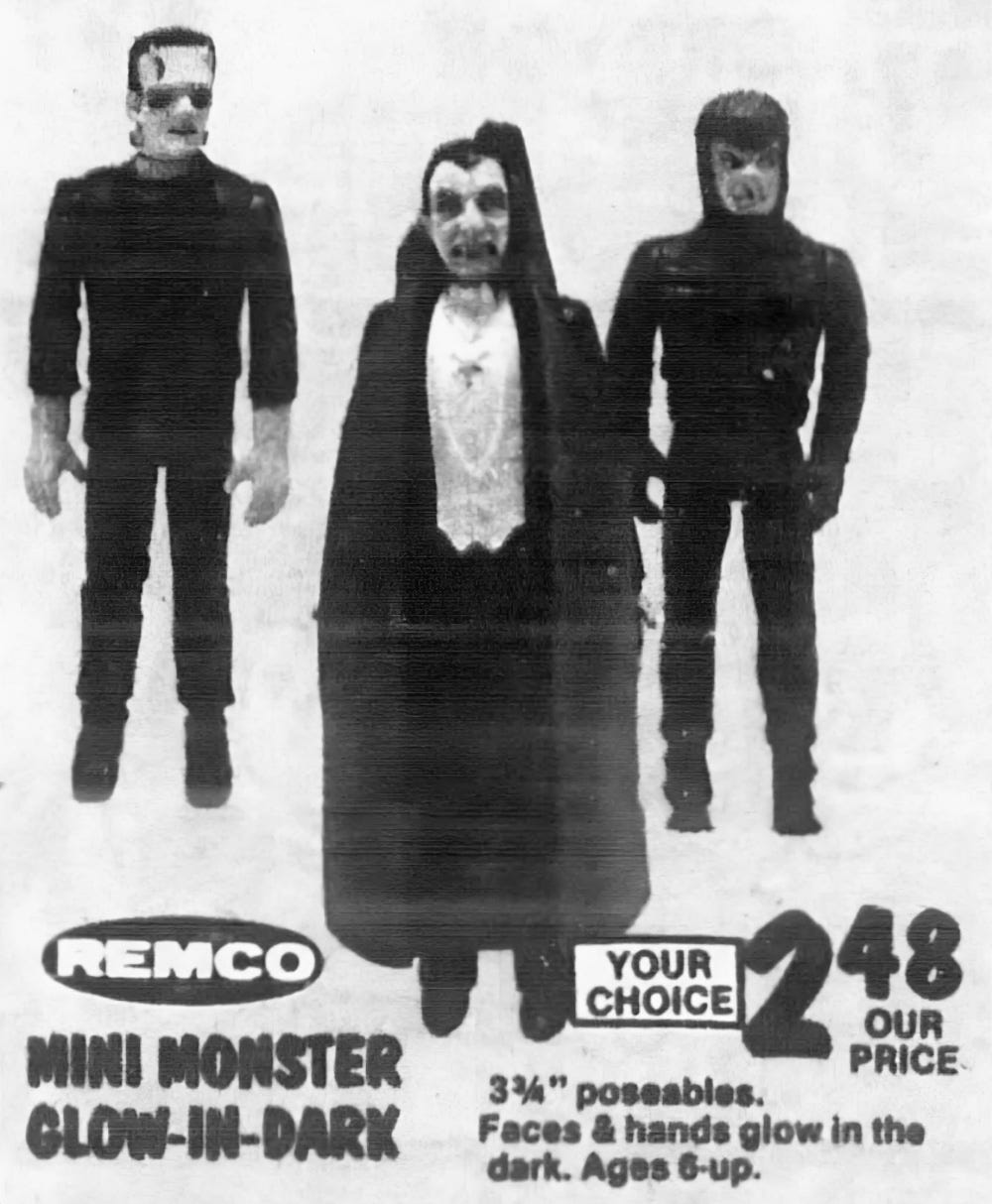
![NOW Country Classics: 90âs Dance Party[Lemon & Spring Green 2 LP]](https://m.media-amazon.com/images/I/61hVquUofcL._SL500_._SS300_.jpg)


